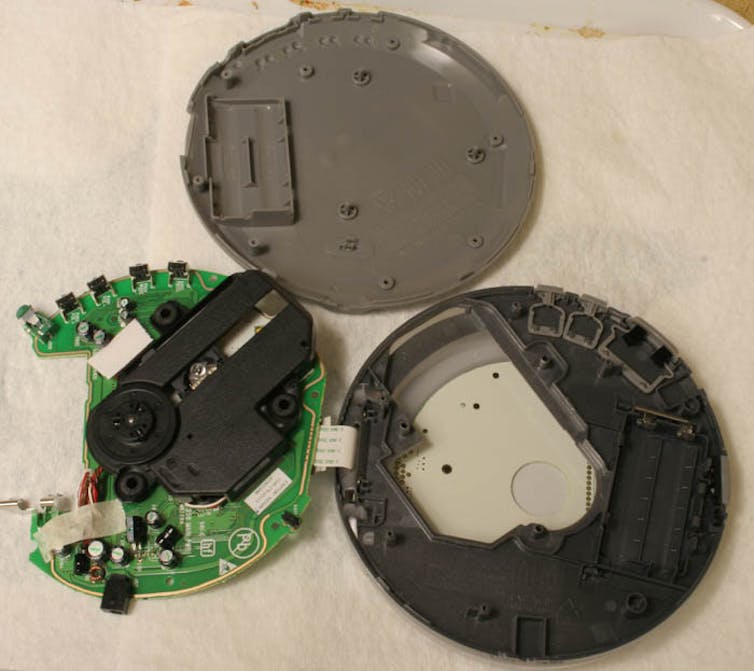By Paulo Garcia
The year is 1985. Portable CD players like the Sony Discman are the epitome of consumer technology: a battery-operated device that allows you to listen to music anywhere (provided you brought the CDs as well).
A recent graduate from electronics and computer engineering programs understands how the portable CD player works. They cannot build it without the precision tools and materials, but they can certainly design it: they understand how audio is encoded onto a CD’s surface, the mechanics of reading those data and the signal processing hardware and software that transform them into sound.
The year is 2019. The smartphone is the epitome of consumer technology. A marvel of complex hardware: integrated circuits that handle wireless communication, graphics processing, a microprocessor more powerful than those found in home computers in 1985. Layers upon layers of software, from a complex operating system to applications powered by virtual machines. A device an engineering graduate does not understand.

The slower pace of engineering education
Technology has surpassed technological education. There are so many concepts, techniques and tools that an engineering graduate should know, but there isn’t enough time. This is not a novel insight, but it is getting worse, and this gap between education and market demand has serious consequences.
Students are less motivated, as they realize the gap between what they are learning and the technology they use will not be bridged over four years of undergraduate education. Employers are frustrated because they want graduates to have mastery over the latest programming language or design methodology. And yet, engineering curricula have changed little over the past 30 years. Oh yes, we’ve modernized our labs and we’re no longer teaching obsolete programming languages, but the bulk of the knowledge is the same.
Teaching the basics
Curricula remained more or less the same for good reason: we need to teach the basics. We could educate towards market requirements and teach only the latest programming languages or make students memorize the meaning of the latest buzzwords — but that would be a disservice. This would equip our graduates with the skills required for the next five years, but it would also prevent them from growing beyond that. We want to equip students with the knowledge and the skills to be life-long learners, which is the only way to survive in a technological profession.
But how to balance these conflicting requirements: graduate readiness versus strong foundations? The answer is twofold.
First, we need to change how students learn by fostering inclusion of students in research and mentoring towards continuing education. We’re doing this: whilst the content of engineering curricula have not changed much, pedagogical approaches certainly have. We’re moving towards an academic approach where student/faculty interactions are no longer limited to the classroom. For example, the Discovery Centre at Carleton University provides undergraduate students with opportunities to participate in research and engage with communities of other disciplines to address common real-world issues from the perspective of their program areas. More programs and initiatives aimed at offering diverse learning experiences are underway.
Second, we must realize that undergraduate degrees alone are not enough to train tomorrow’s engineers. We are designing more and more master’s programs that will provide advanced training across several sub-fields, from Biomedical Engineering to Embedded Systems. Within these, education paths are less and less linear, allowing students to select more refined specializations. For example, the Department of Systems and Computer Engineering offers several graduate specializations within its master’s programs, to develop fine-grained expertise in students’ sub-field of choice. The programmes also ensure a strong foundational knowledge of the basics that can support them throughout their careers.
Connecting curricula
We are moving towards connected curricula, where the boundaries between teaching and learning, research, outreach and community engagement are starting to disappear. We believe this is the path to train 21st century engineers who will have to develop technology, not in isolation, but within a complex social fabric: think bitcoin or autonomous cars. But we need to deal with the societal aspects that are involved: the economic and personal strain on students who will have to take more advanced degrees, for more years, for longer hours. This will require joint efforts between universities and government.
For the most part, engineering schools are still teaching the same things they were teaching 30 years ago. Now, students are learning them differently, and that makes all the difference. Technology is still surpassing technological education. But we are moving towards better pedagogy.
We’ll catch up.
This article is republished from The Conversation under a Creative Commons license. Carleton University is a member of this unique digital journalism platform that launched in June 2017 to boost visibility of Canada’s academic faculty and researchers. Interested in writing a piece? Please contact Steven Reid or sign up to become an author.
All photos provided by The Conversation from various sources.
![]()
Wednesday, January 30, 2019 in The Conversation
Share: Twitter, Facebook



